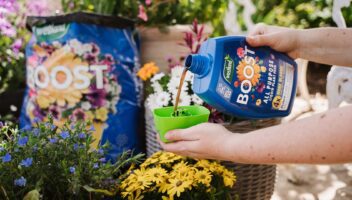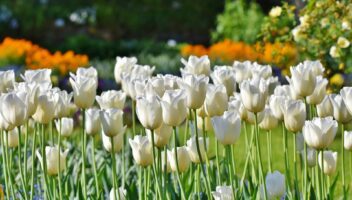Everyone wants a beautiful, lush garden, and as keen gardeners, we know this takes lots of nurturing and patience. One of the key elements of gardening is ensuring the garden is well hydrated. With different types of plant, soil, and conditions, this is not as simple as blanket watering everything the same way. Here, we offer helpful advice in this guide to successful watering.
Best Time to Water your Garden in Spring
If you want your garden to look its best before the summer, start watering it in the spring. Watering is a vital part of maintaining your garden during the spring season, and it’s important to avoid going wrong. If you water too early, it may impact your drainage system. If you water your plants too late, they may suffer from dehydration. While you should keep an eye on your garden all year and provide a drop of water here and there if it appears thirsty, your regular watering schedule should begin in the first week of May.
Saving Water
Knowing how to save water to utilise in your garden can become extremely helpful. This is particularly important if you encounter a hosepipe ban or wish to turn to a more environmentally friendly way of watering.
Greywater
Greywater is a method of saving water from your household usage, i.e., baths and showers, and turning this into the water you would use for your plants. It should be used within 24 hours of collection to limit bacterial development. However, you do not need to worry about any contaminants (shampoo/soap). Your plants’ soil acts as a very effective filter.
Please note: greywater is not safe to drink and should not be used to water edible crops.
Water butts
Water butts are a fantastic solution to water waste as they will collect rainwater and store it in order to use it when the water supply in your garden is sparse. This means the quantity of water from a household mains supply is significantly reduced, which ultimately will reduce the bill cost over time. But water butts are also built to last, so they make a brilliant investment for the future. As they are so durable, they will last in poor weather conditions and can also be a place to store your greywater if no rain is expected.
Watering cans
A great way to keep up with your watering, particularly during a hosepipe ban, is by using a watering can. This will help to reduce the quantity of water you’re using whilst still keeping you in control and your plants looking healthy. Using a watering can either early in the morning or late in the evening will help your soil to retain moisture rather than it being soaked up and evaporating in the sun. Ensure that you are aiming the water at the base of your plants rather than on the leaves or flowers, so no water goes to waste.
Mulching
Not only does mulching improve the conditions of your soil, but it can also help you to save water and keep your garden looking neat and tidy. This is because mulching helps your soil retain moisture during the warmer months, and as the colder seasons arrive, rain can still enter the soil. It will also mean that you will not have to water as regularly, which can help to suppress any weeds. To apply mulch, use a layer of materials such as wood chippings, well-rotted manure, or damp leaves on moist soil. As this decomposes, the nutrients from these materials are released, as well as absorbing any moisture from rain or watering.
Water-saving crystals
To increase your soil’s ability to retain water over an extended period of time, water-saving crystals can be added to help reduce the need for regular watering. Water-saving crystals work brilliantly in both hanging baskets and containers. These often dry out quicker due to their more confined space. Aqua Gel Smart Garden is available at Hillier and is an ideal solution for keeping your plants hydrated for prolonged periods of time. Crystals are a great addition as they will increase in size when watered and will slowly release moisture over time to help your plants thrive during the heat.
When To Water
During the sunny summer months, plants should be watered early in the morning to avoid evaporation loss during the day. On hot summer days, you may find you are watering in the morning and evening.
Generally, a lower frequency and higher volume of watering is best. Give your plants a good soaking instead of a light drop more often. The water will soak down and encourage the plants to grow deep roots.
How To Water
You should water your plants by directing the water flow to the base of the plant. Don’t soak the leaves as this encourages disease, whilst thirsty roots may miss out.
When you are directing your water flow at the base of a plant. Ensure you move the water around the plant, as watering on one side all the time may result in uneven growth. Let the water sink down into the soil. Repeat two or three times until the water no longer goes down quickly.
Plants Requiring Extra Water
Containers and hanging baskets dry out much more quickly than garden beds and borders. If you only have a few minutes to devote to watering, it’s best to focus on these. Plants in direct sunlight will also need more water.
Anything you have planted this year needs a little more TLC, water wise. Until plants become more established, they require more care and a good soak a few times a week. If you love getting your hands dirty, check the feel of the soil or use a moisture meter.
Keep your new trees and shrubs watered correctly in the early months and years. This will encourage root growth and pay dividends in the future.
Be aware that there are also some plants that require much less water – thyme, for example, is frequently overwatered. As a Mediterranean plant, it will thrive if allowed to dry out.
Find a range of products for successful watering at Hillier Garden Centres





